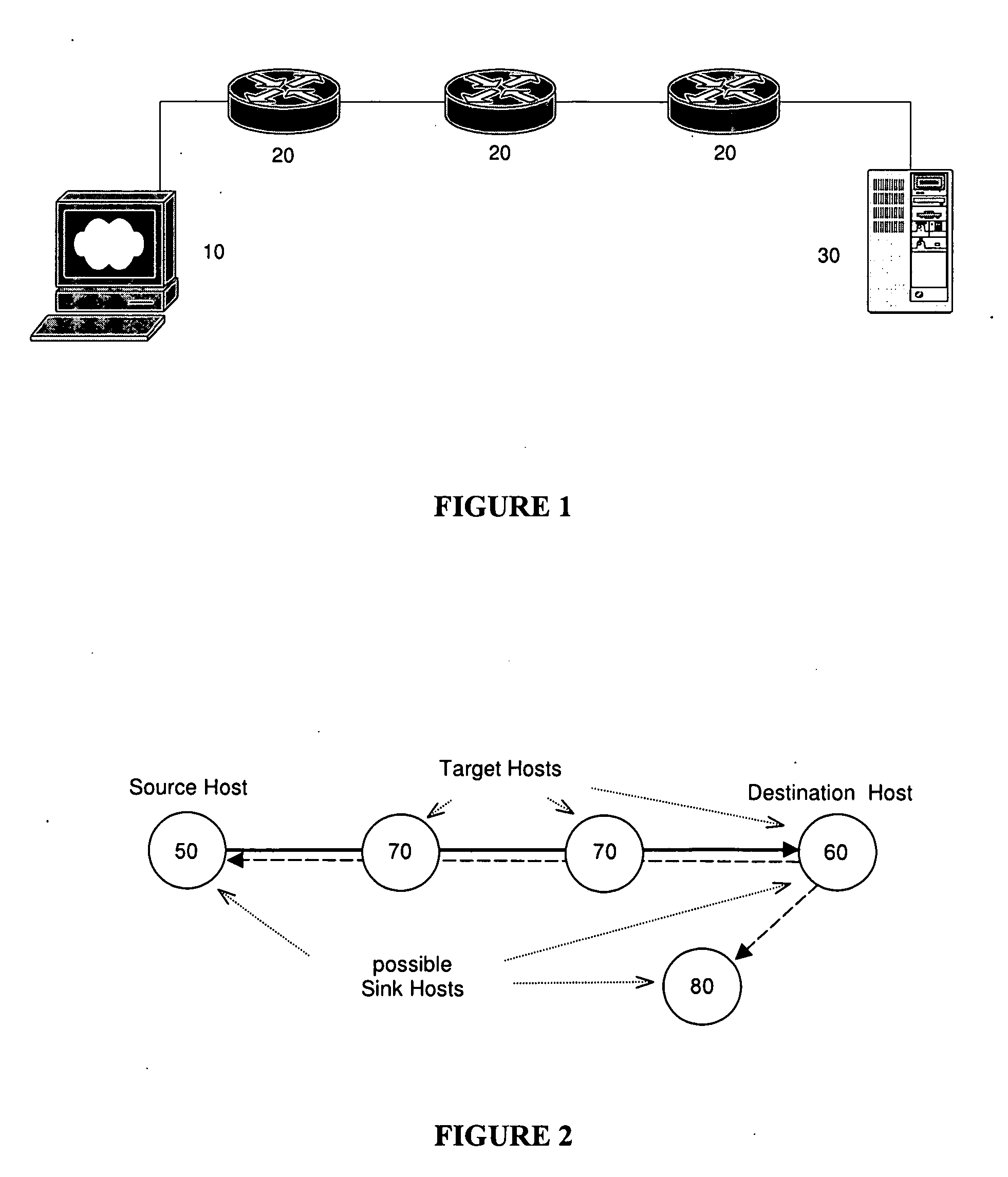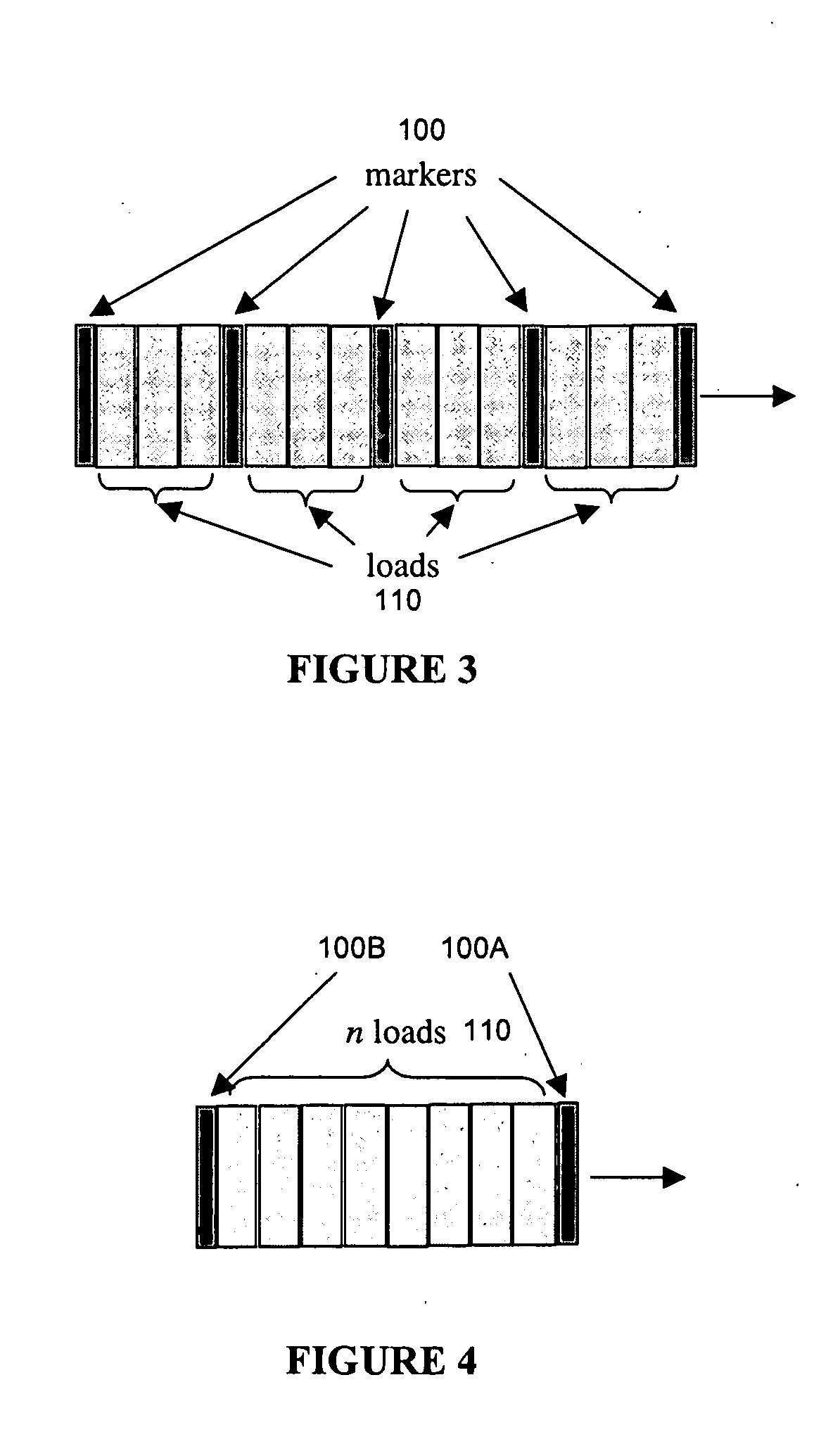Method and apparatus for characterizing an end-to-end path of a packet-based network
a packet-based network and end-to-end path technology, applied in the field of networks, can solve the problems of low accuracy of packet-based network end-to-end path characterization errors, packet-based network end-to-end path dispersion techniques, and evaluation techniques that are sensitive to network path asymmetries,
- Summary
- Abstract
- Description
- Claims
- Application Information
AI Technical Summary
Benefits of technology
Problems solved by technology
Method used
Image
Examples
Embodiment Construction
Definitions
[0030] The term “source host” is used to define the location or node of a network from which transmission of the packets for characterising the network path originate.
[0031] The term “destination host” is used to define the location or node of a network that defines an end-to-end path with regard to a specific source host.
[0032] The term “target host” is used to define the location or node of a network about which characteristics are to be collected. A target host can be intermediate between the source host and the destination host and may alternately be the destination host.
[0033] The term “sink host” is used to define the location or node of a network at which information regarding the status of the transmitted packets is collected. The sink host can be any node within the network, including the source host, destination host, target host or a node that is not along the path being characterised.
[0034] The term “packet” is used to define a piece of information that ...
PUM
 Login to View More
Login to View More Abstract
Description
Claims
Application Information
 Login to View More
Login to View More - R&D
- Intellectual Property
- Life Sciences
- Materials
- Tech Scout
- Unparalleled Data Quality
- Higher Quality Content
- 60% Fewer Hallucinations
Browse by: Latest US Patents, China's latest patents, Technical Efficacy Thesaurus, Application Domain, Technology Topic, Popular Technical Reports.
© 2025 PatSnap. All rights reserved.Legal|Privacy policy|Modern Slavery Act Transparency Statement|Sitemap|About US| Contact US: help@patsnap.com



